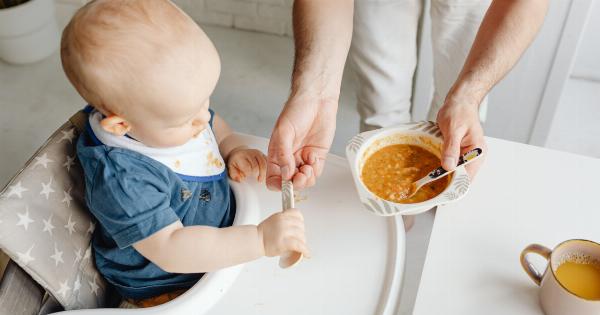As your baby grows, they will eventually need to start eating solid foods. Feeding a baby for the first time can be both exciting and nerve-wracking for parents.
Using a teaspoon can be a great way to introduce your baby to new flavors and textures in a controlled manner. Here are some important tips to keep in mind when starting to feed your baby with a teaspoon.
1. Wait for the Right Time
The American Academy of Pediatrics recommends waiting until your baby is at least 6 months old to introduce solid foods. Waiting until this time helps ensure that your baby is developmentally ready to handle new textures and flavors.
Before starting spoon-feeding, your baby should be able to sit up and hold their head steady on their own.
2. Choose the Right Time of Day
Try to pick a time of day when your baby is alert and not too tired, hungry, or cranky. It’s also a good idea to choose a time when you have plenty of time to devote to feeding and can be patient with your baby as they learn this new skill.
3. Plan for Messes
Feeding a baby with a teaspoon can be messy, so try to choose a time of day when you have plenty of time to clean up afterwards. You may also want to put a bib on your baby to protect their clothes.
Some parents find that using a plastic mat or tray can help contain the mess.
4. Start Slow
When starting to spoon-feed your baby, it’s important to go slow. Offer just a small amount of food at first, and wait to see how your baby reacts before offering more. Some babies may not be interested in food right away, and that’s okay.
It may take several attempts before your baby is ready to eat solid foods.
5. Choose the Right Foods
When starting to feed your baby with a teaspoon, it’s important to choose the right foods. Pureed fruits, vegetables, and meats are great options for spoon-feeding.
Be sure to choose foods that are age-appropriate and do not contain any additives or preservatives.
6. Use a Small Spoon
Using a small spoon can help you control the amount of food your baby is getting. Look for spoons that are designed specifically for babies and have soft, rounded edges that won’t hurt your baby’s mouth.
You may also want to try different spoons to find one that your baby prefers.
7. Offer Water as Well
When starting to feed your baby with a teaspoon, it’s also important to offer water. Your baby may get thirsty while eating, and water can help prevent dehydration. You can offer water in a sippy cup or with a spoon.
8. Be Patient
Learning to eat solid foods is a new experience for your baby, and it may take some time for them to get the hang of it. Be patient with your baby and don’t force them to eat if they are not interested.
It’s also important to remember that every baby learns at their own pace.
9. Watch for Allergic Reactions
As you start to introduce new foods to your baby, it’s important to watch for any signs of an allergic reaction. Symptoms may include vomiting, diarrhea, rash, or difficulty breathing.
If you notice any of these symptoms, stop feeding your baby the new food and contact your pediatrician.
10. Make it a Positive Experience
Finally, it’s important to make spoon-feeding a positive experience for your baby. Encourage your baby to try new foods, and offer lots of praise and encouragement.
Making spoon-feeding a fun and enjoyable experience can help your baby develop a healthy relationship with food.





























